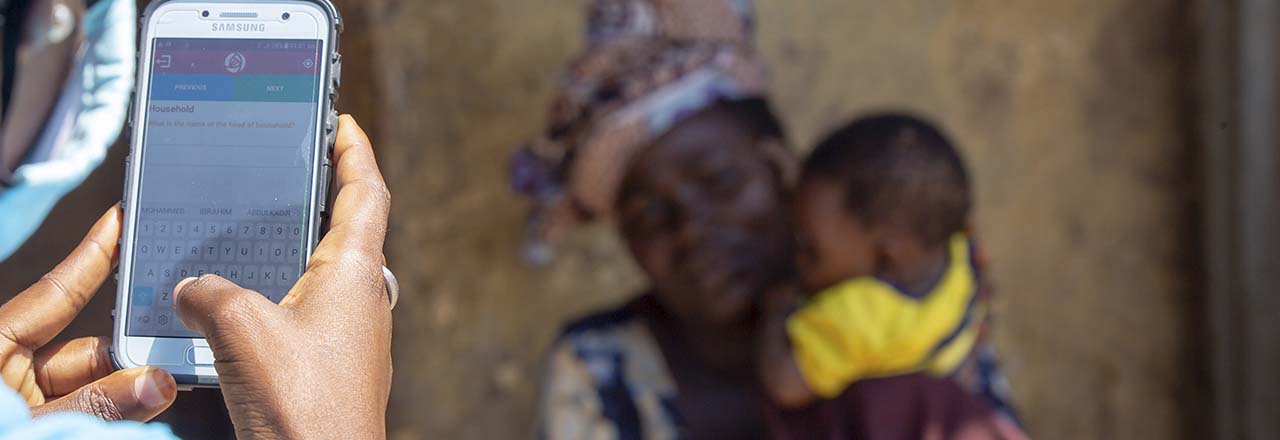

Digitalizing Development: Increasing Scale and Effectiveness
The Anopheles mosquito works at scale.
The insect transmits malaria in 85 countries, across five regions, and in 2022, according to the World Health Organization, it caused an estimated 249 million cases of malaria. More than half a million cases were fatal. In the WHO’s hardest-hit African region, about 79% of all malaria deaths were among children under 5 years old.
Behind that urgency lies the frustration of knowing the disease is preventable. Catholic Relief Services wants to put Anopheles out of work. Permanently and everywhere.
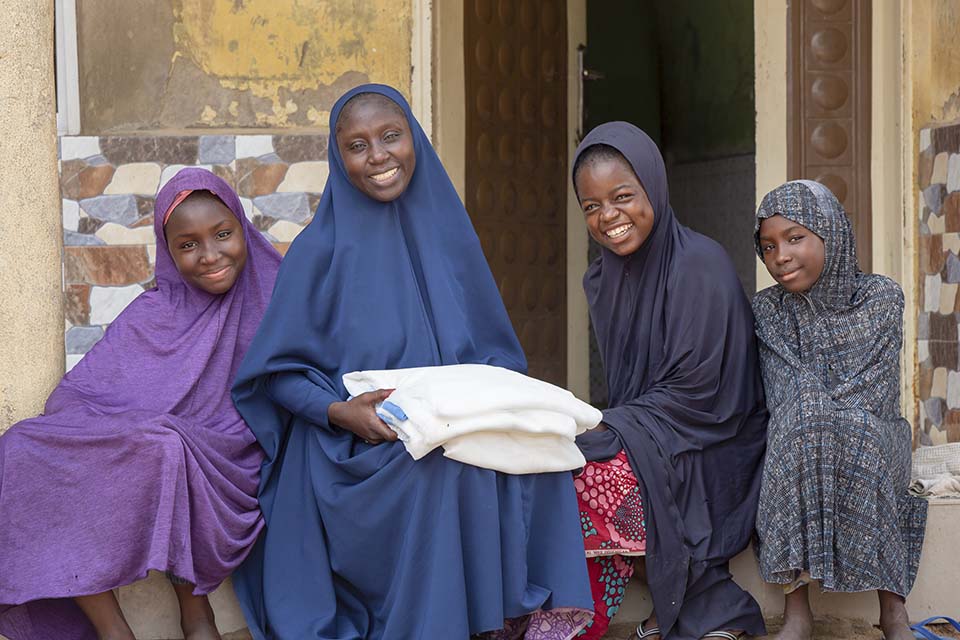
Women receive nets from the CRS first digitized mosquito net distribution in Nigeria since the COVID-19 pandemic outbreak.
Photo by Francis Nweke for CRS
“We want to reach more people at a lower cost, with less effort, more routinely, more regularly, with more accountability,” says Joshua Harvey, director of innovation and scale in CRS’ Information Communication Technology for Development (ICT4D) division. “So, we make better use of data.”
CRS’ Digital Campaigns Handbook is a comprehensive guide to achieving those goals. To people inside and outside the humanitarian community, the agency’s most recent accomplishments are impressive.
Collection of a Decade of Lessons Learned
“Part of the reason I joined CRS is it’s a leader, if not the leader in the ICT4D space,” Harvey says. “It has an enormous breadth of experience implementing ICT4D at scale, particularly in campaigns.”
Over the past decade, as CRS recorded its experiences in digital campaigns, its health division wanted to see those experiences collected and collated and made available in one, easy-to-access format. In a process described by witnesses as “Herculean,” the digital campaign handbook resulted.
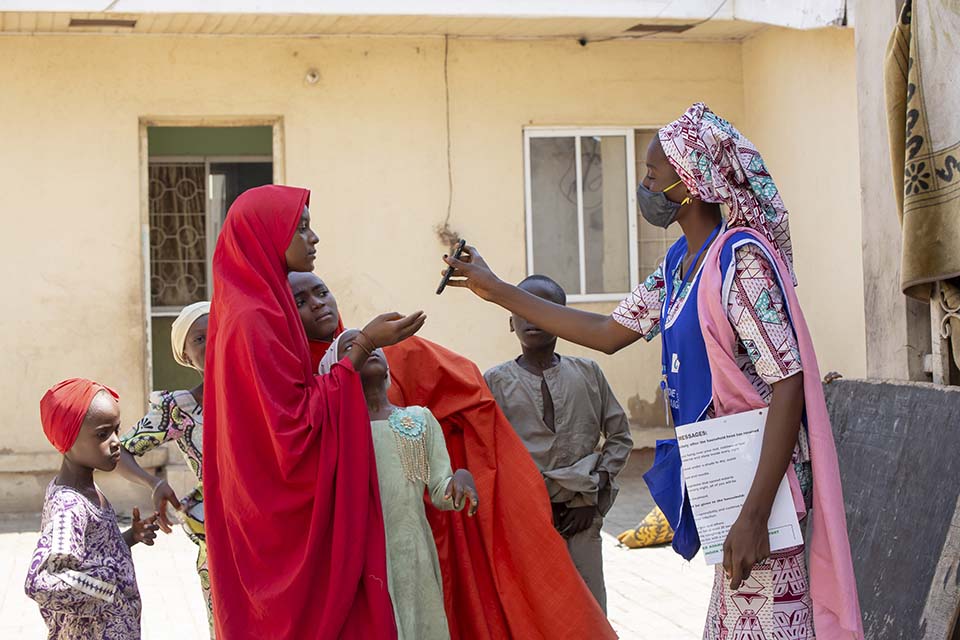
CRS trained community health worker uses a smartphone to monitor the distribution of insecticide-treated bed nets in Nepa Road (Household) Jimata, Yola, Adamawa State, Nigeria.
Photo by Francis Nweke for CRS
“The handbook was an effort to encapsulate what we've learned and make it digestible by others who are working in this space,” Harvey says.
It’s a mix of easily navigated visuals and text that looks like a big PowerPoint deck but that works as a reference manual. It includes a set of exercises that guide users through the process of creating a digitalized campaign.
“It’s not just textbook knowledge, but something very practical that you can work through and plot your digitalization trajectory," Harvey says. “It takes our lessons and turns them into a process that you can follow to digitalize your campaign.
CRS offers that collection of lessons learned to others at no charge.
CRS Digital Campaigns Handbook
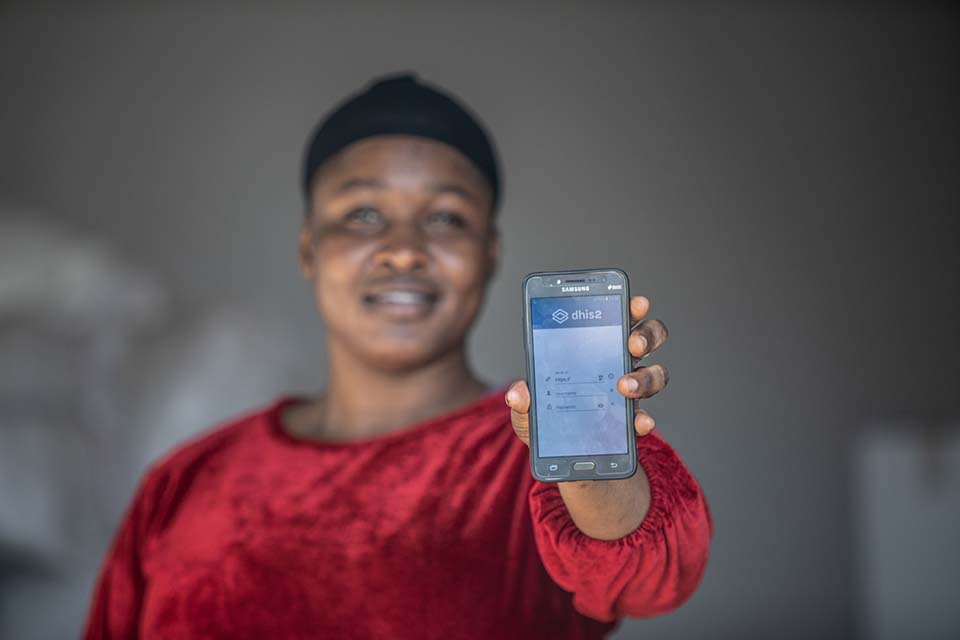
A nurse attendant in charge of the distribution of mosquito bed nets to pregnant women and women with children holds a phone with an app that records details about bed net distributions. Photo by Jason Florio for CRS
The ICT4D team’s campaign digitalization enables key stakeholders — governments and national and local partners — to take on this work in its entirety. That includes peer organizations currently working in this space. Together they’re developing capabilities in countries and with partners while moving to fully localize these efforts.
“That's essentially the rationale for the handbook.,” Harvey says. “It says, ‘here, this is what we believe to be true about how you digitalize a campaign.’ We want to deliver that to our partners both for their consumption now and for continuous learning together over time.”
Digitalizing a decade of experience began with small revelations. The team would see an area that could be improved, a process made faster and smoother by digitalizing. Those observations made initial data collection and planning easier. As they began matching data on participants with actual distribution data. They began making connections.
“I would say that decade of digitalization looked like an early set of hypotheses around how we can make things better. It snowballed into more and more observations or revelations. We realized we can do a lot once we unlock these kinds of initial questions and challenges.
New approach to familiar challenges
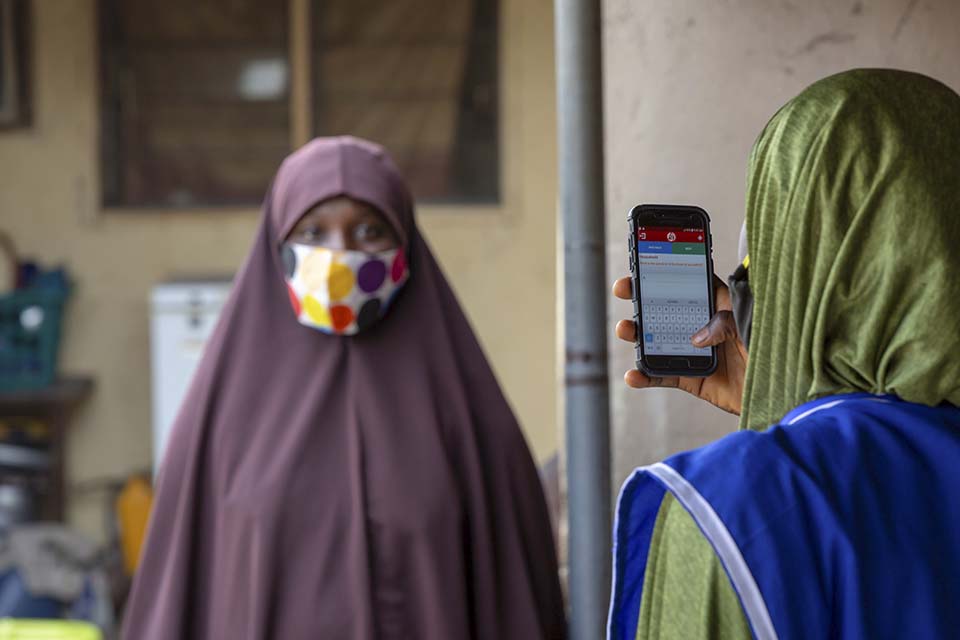
CRS trained community health workers use smartphones to monitor the distribution of insecticide-treated bed nets in Nigeria.
Photo by Francis Nweke for CRS
The implications flowing from ICT4D work in malaria campaigns point to a tectonic shift in development work.
“Our ICT4D work generally, and specifically our campaign digitalization work, are as much about changing the processes and procedures of implementing a campaign as they are about the technology.”
For CRS’ ICT4D division, and, increasingly, the agency as a whole, technology becomes less component-of-a-project and more a way of approaching a challenge.
Adding digital opens up new opportunities for the way you run a campaign.
“We do planning differently. We do enumeration differently. We do tracking and supply chain differently. It's not just a matter of adding technology. We run the campaigns differently because of digitalization,” Harvey says.
The handbook also arose out of a concern that the innovations were not being captured and shared.
Increased monitoring accuracy
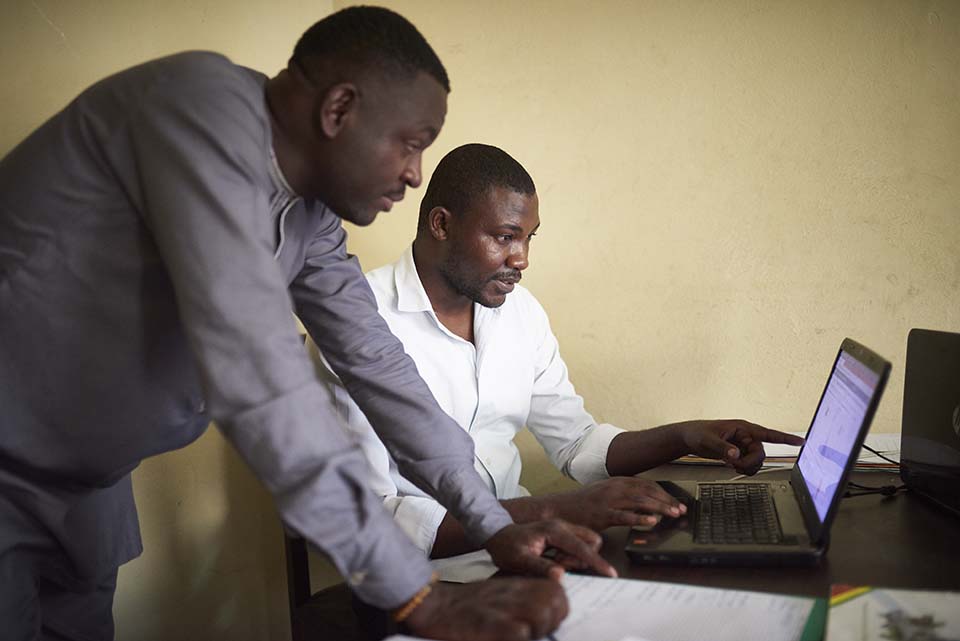
Health Information Services and Epidemiological Surveillance workers in Congo-Brazzaville use software the Global Fund national mosquito net distribution. ICT4D solutions were integrated into the project.
Photo by Sam Phelps/CRS
“We want to build capacity around what really makes the difference in digitalization. That is, how you change your systems, your processes, your procedures, not just the technical or technological component.”
Suzanne Van Hulle is CRS' senior malaria advisor with 17 years experience in malaria sector. She points to faster and more accurate data collection as a key benefit of digitalization.
If you don't have digital technology, you need to go out physically in bigger numbers to do a supervision or a monitoring visit. Then gather all of that data over multiple locations in order to get an idea of what's going on in the campaign,” she says. “Whereas, using the digital technology can give you more of an idea of how many households have received the nets, which households are yet to be covered. Then you can pinpoint if you see a whole area that hasn't received Nets.
In seasonal malaria chemoprevention, children must receive monthly doses to fend off the disease. Missing a month heightens vulnerability to malaria. Using digital technology, staff know when a child has missed a dose. They know to investigate further to correct problem.
“Digital gives a lot of visibility in terms of what needs to be changed in how we are targeting and reaching all these children,” Van Hulle says.
When the data raises concerns, staff can target children where the problem exists and if necessary talk with government officials about why this might happening.
“We want to enable everyone to move further and faster toward that future in which our campaigns are digitalized and more effective, more efficient and saving more lives.”
“We don't have to wait until the end of a campaign to identify problems,” Van Hulle says. “There’s a lot more learning as we go and changing the way we operate as we go and that is a big change.”
“If someone is sitting under the tree for six hours in a row, filling in information saying that they have provided medicines to children, you know that that's an issue,” Van Hulle says. “That's really much harder to do with technology because there's a GPS location. That is another benefit of digitalization: accountability”
Identifying and sharing best practices
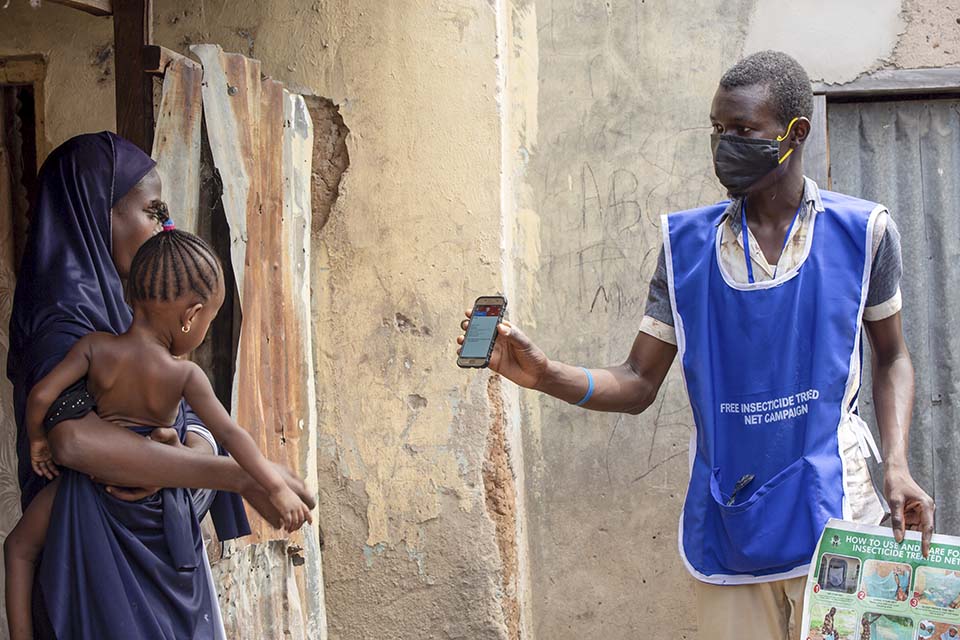
A community health worker explains prevention and proper hygiene practice to prevent the spread of COVID-19.
Photo by Francis Nweke for CRS
The digital campaign handbook applies to many other sectors. Lessons learned can translate to other disciplines.
“We're in a great place because we can take what happens really well in one country and what we learn really well in one country and use the fact of CRS's global footprint to carry those learnings to another country and advise another country,” Harvey says.
A key goal of the handbook is to disseminate knowledge and make co-learning happen.
“We want to enable everyone to move further and faster toward that future in which our campaigns are digitalized and more effective, more efficient and saving more lives,” Harvey says.
If that sounds like NGO aspirational boilerplate, in a sense it is. Joshua Harvey’s response?
“I just say it has the benefit of being true.”

